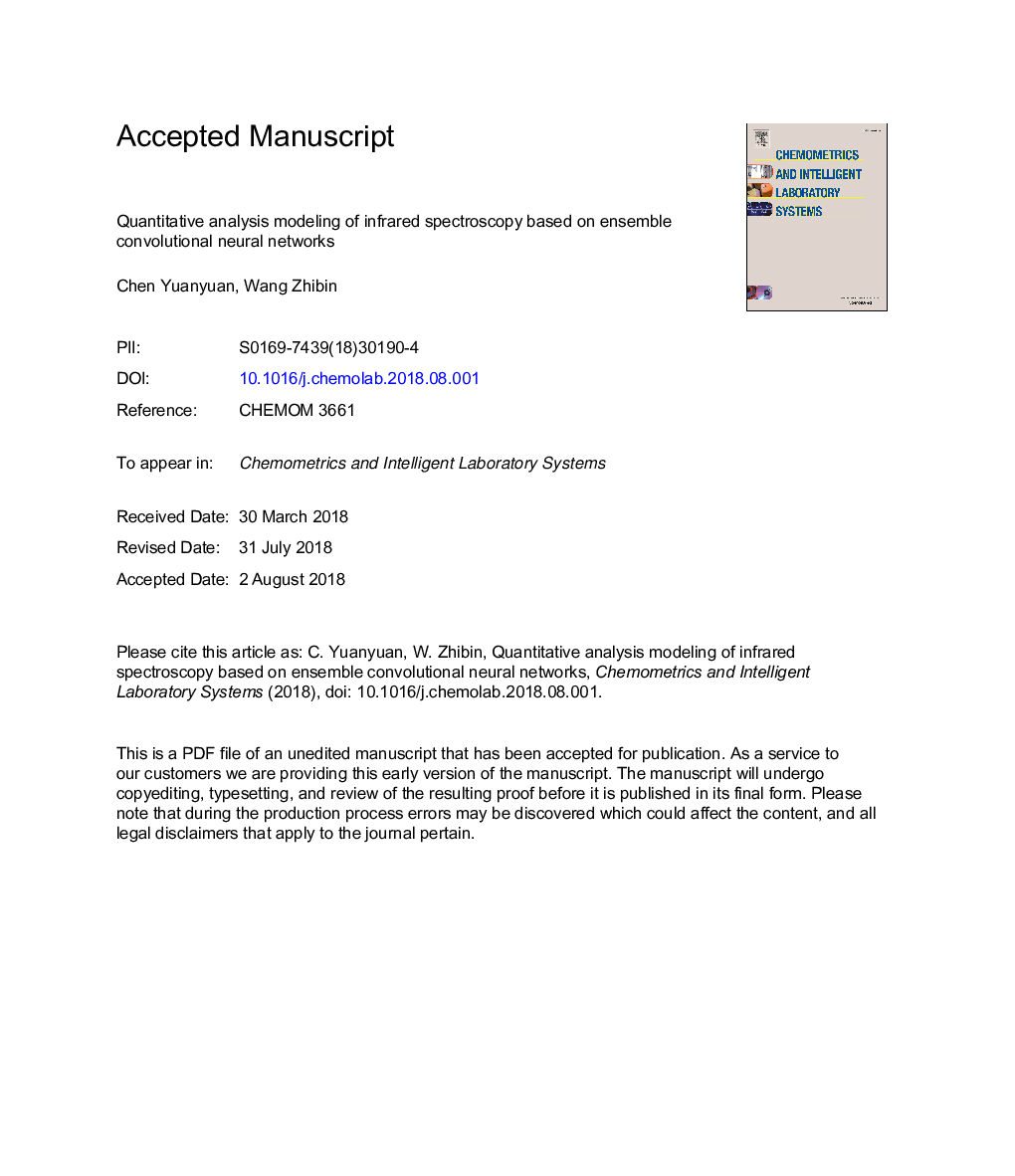| Article ID | Journal | Published Year | Pages | File Type |
|---|---|---|---|---|
| 7561736 | Chemometrics and Intelligent Laboratory Systems | 2018 | 29 Pages |
Abstract
In infrared spectroscopy analysis area, quantitative modeling is often an essential and inevitable procedure to obtain the relationship between collected spectral information and target components. Over the past decades, there are many linear or nonlinear methods have been proposed, such as multi-regression, partial least squares, artificial neural network, support vector machine etc. However, these traditional methods commonly need some preprocessing steps including denoising, baseline correction, wavelength selection and so on. Hence, it requires the users to master so many skilled knowledges before they can establish a good performance quantitative model. Additionally, the stabilities of the above-mentioned methods are often not well enough because there are many random parameters which will result in the model's output are always changing every time. To solve these problems, this paper proposed an end-to-end modeling method based on convolutional neural network and ensemble learning. The experimental results on three infrared spectral datasets (corn, gasoline and mixed gases) showed that the generalized performance of proposed ECNN method outperforms traditional methods like PLS, BP neural network and single CNN method with whole spectral range raw data instead of selected wavelengths. Hence, the proposed method can obviously reduce the modeling knowledge for users and easier to use.
Related Topics
Physical Sciences and Engineering
Chemistry
Analytical Chemistry
Authors
Chen Yuanyuan, Wang Zhibin,
